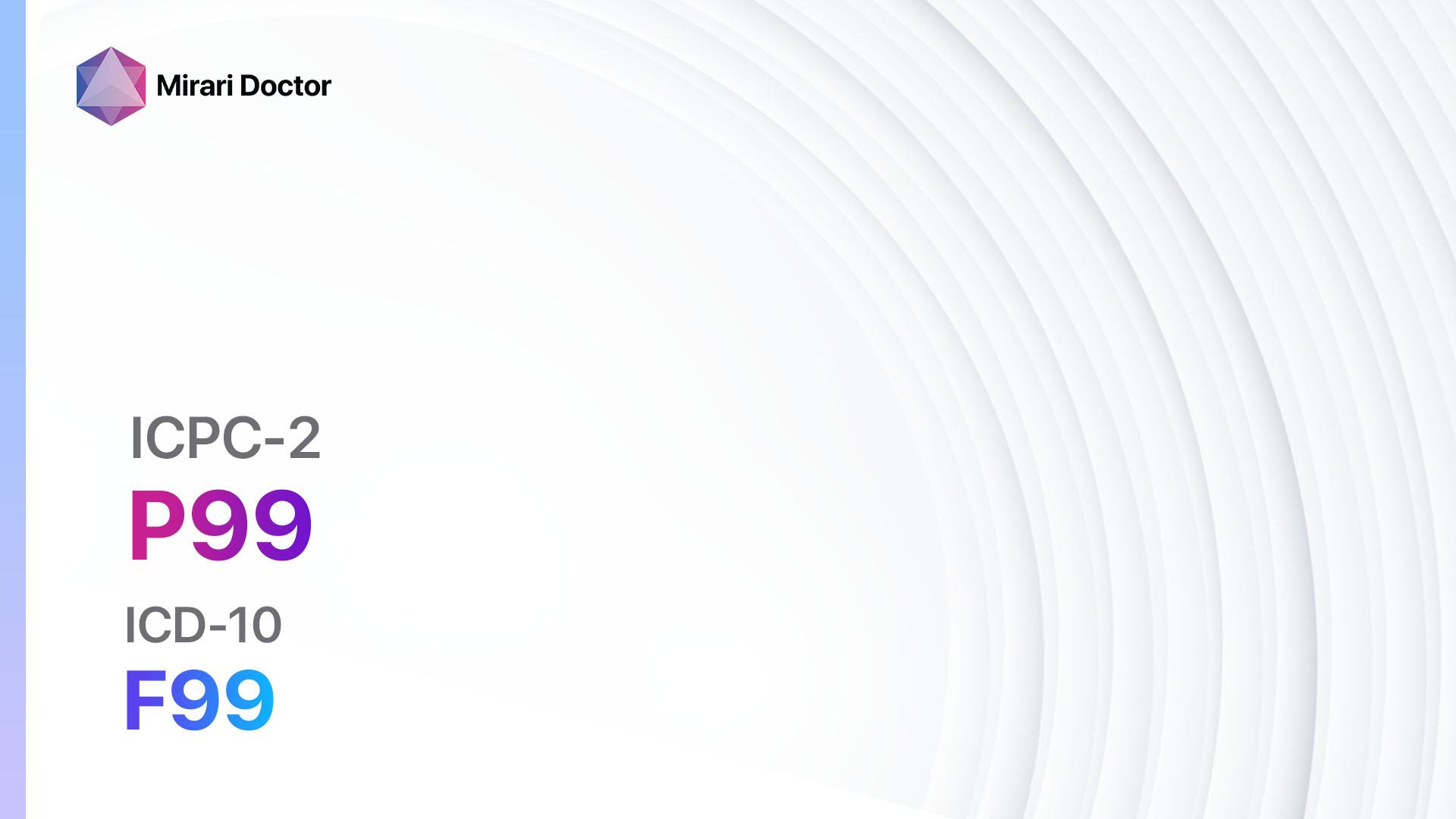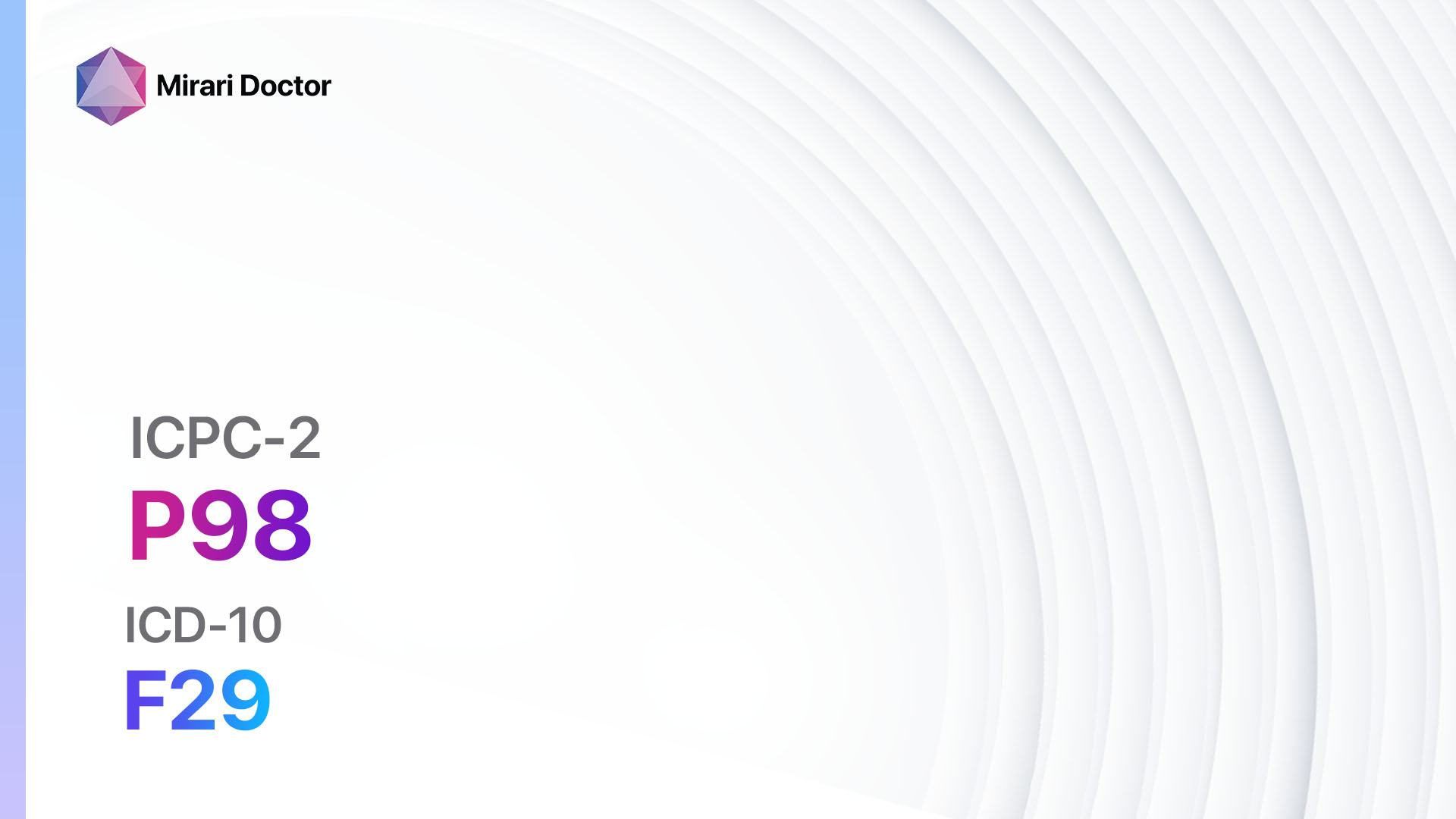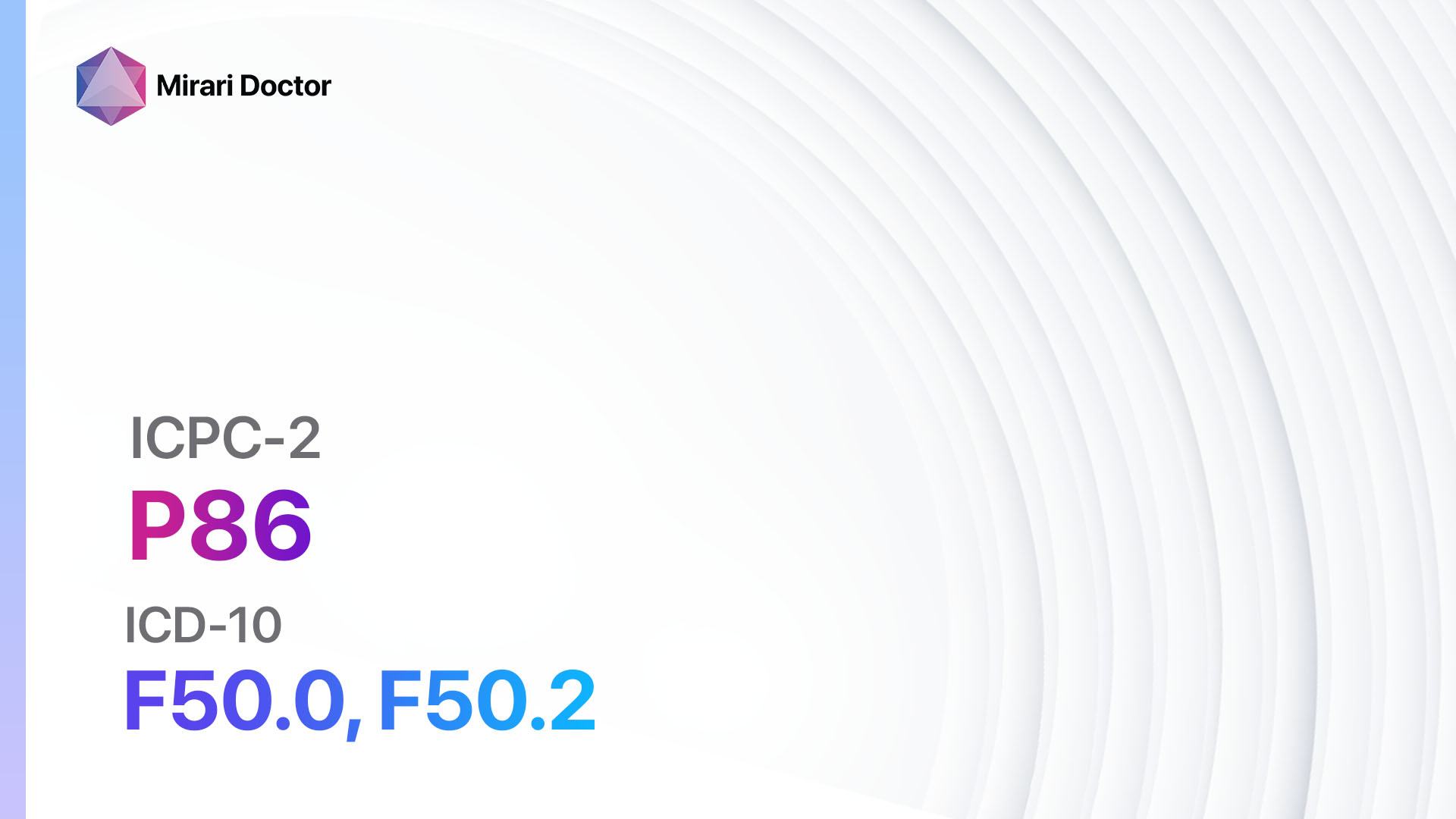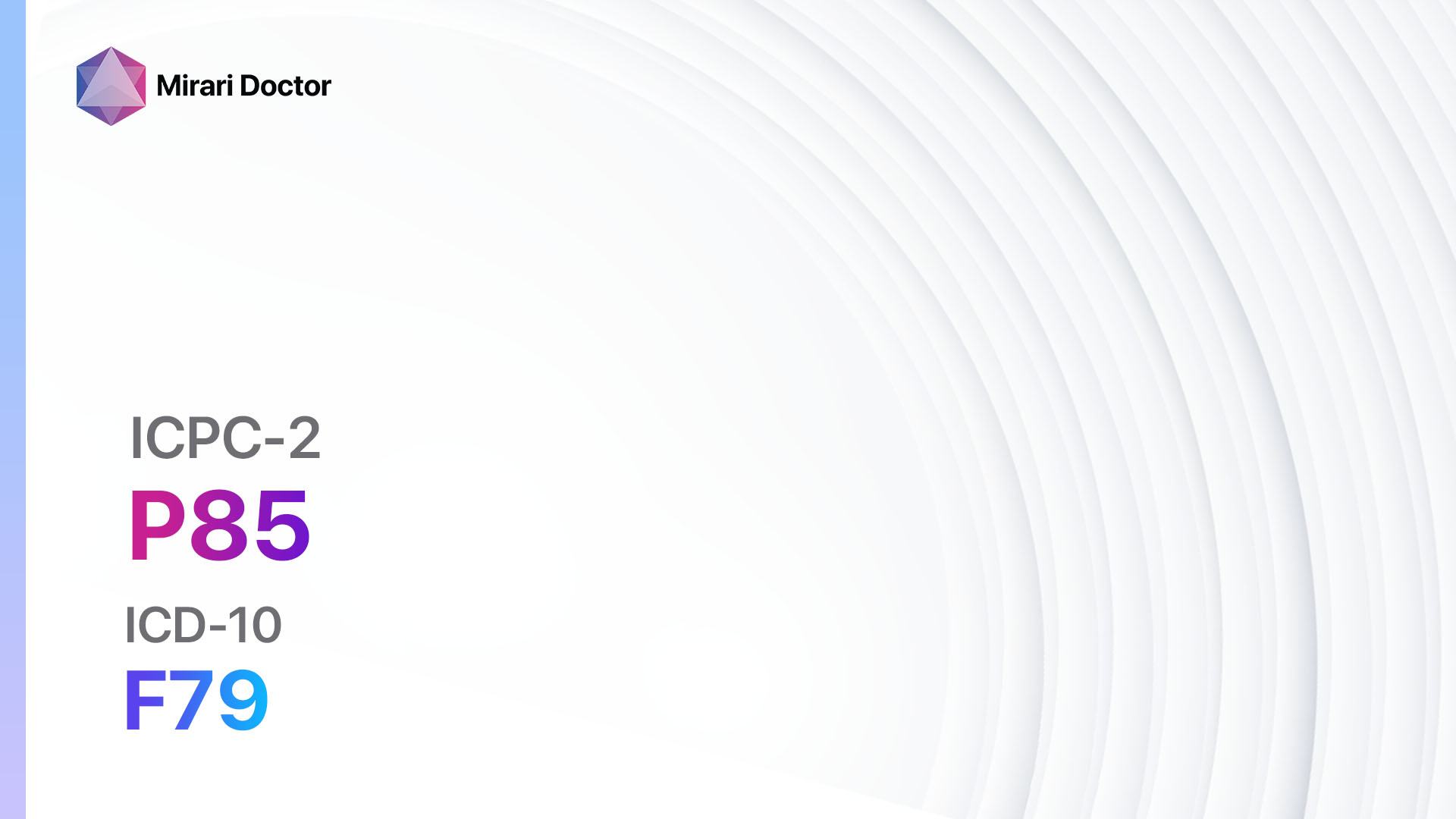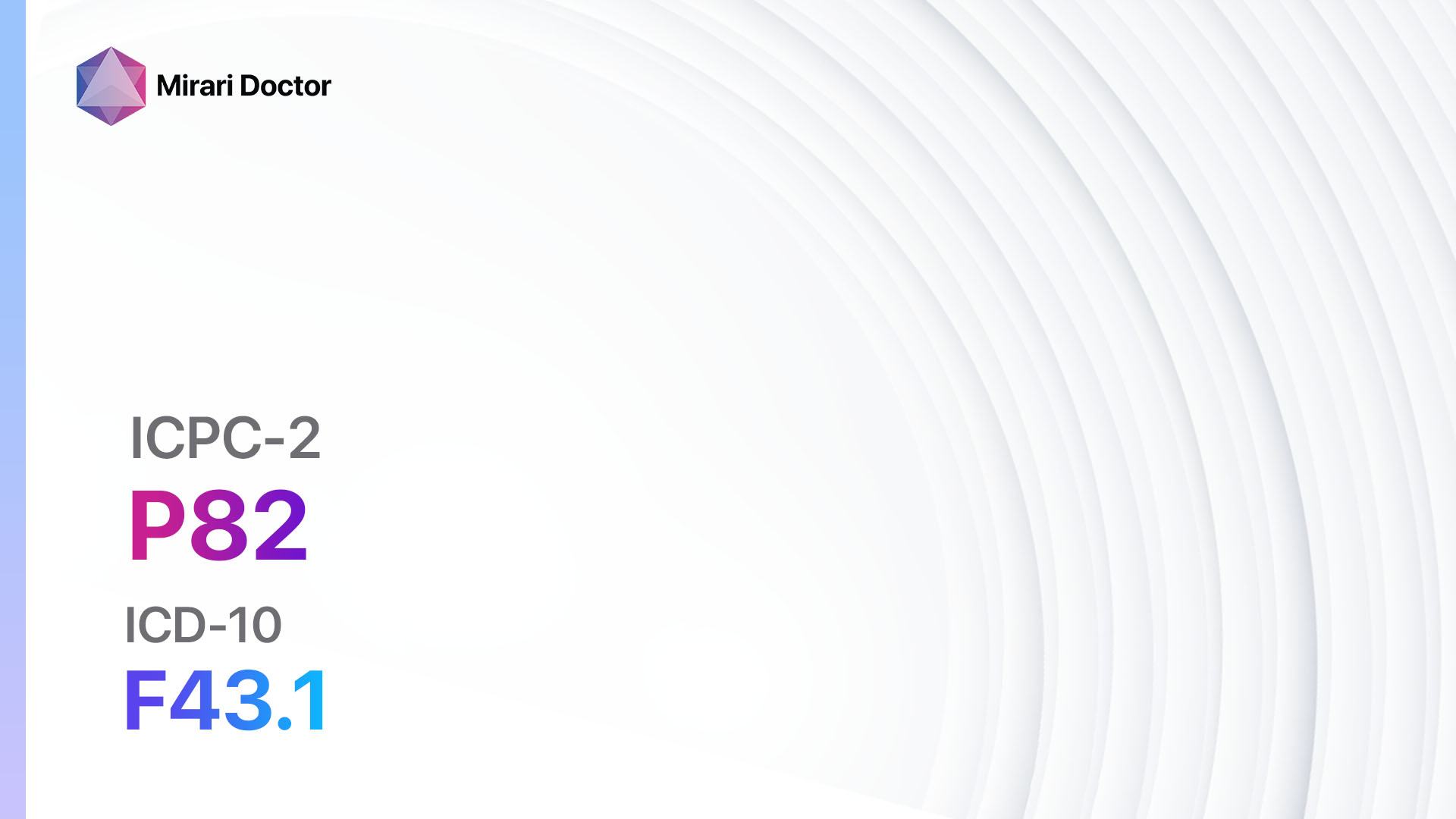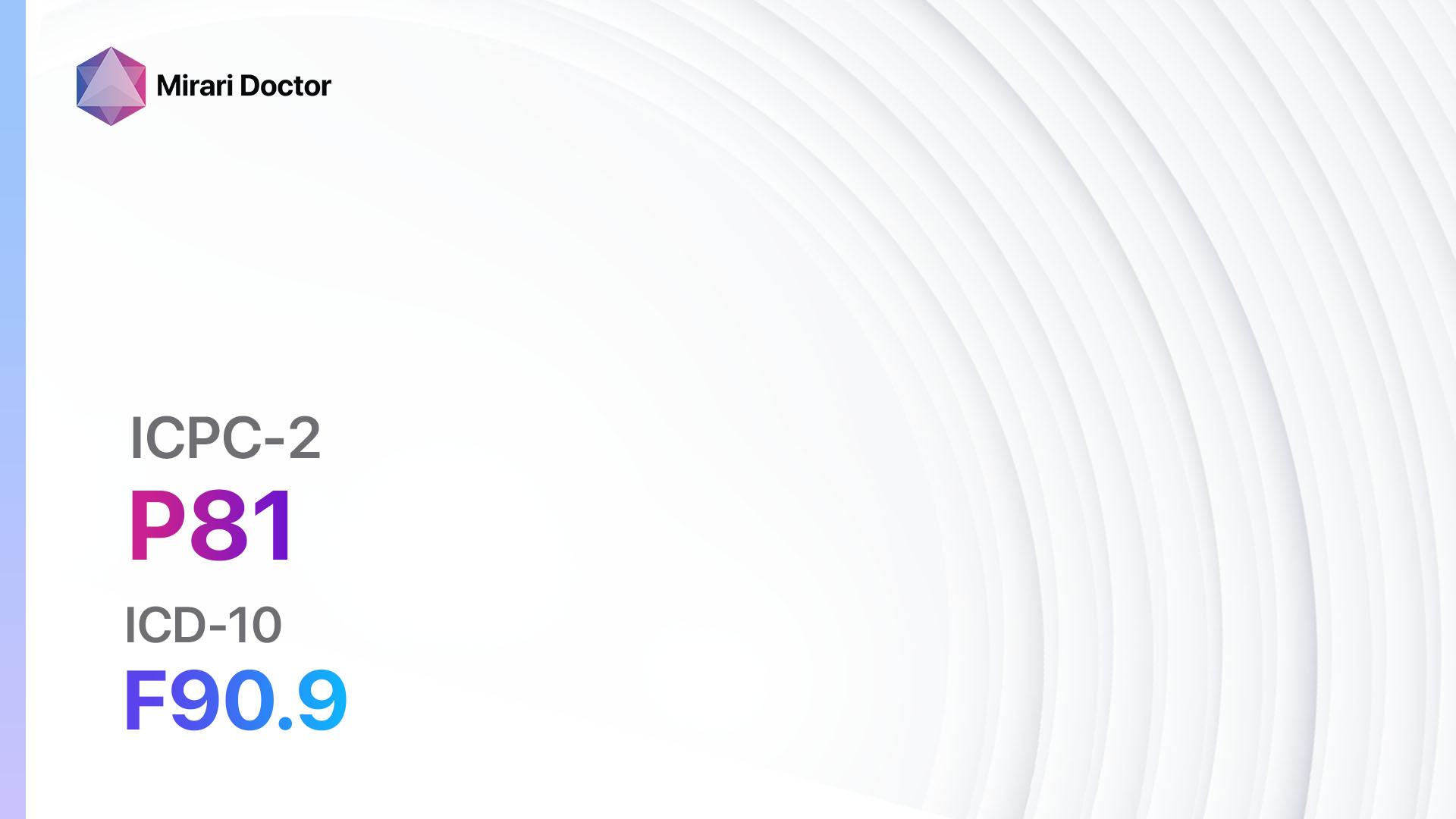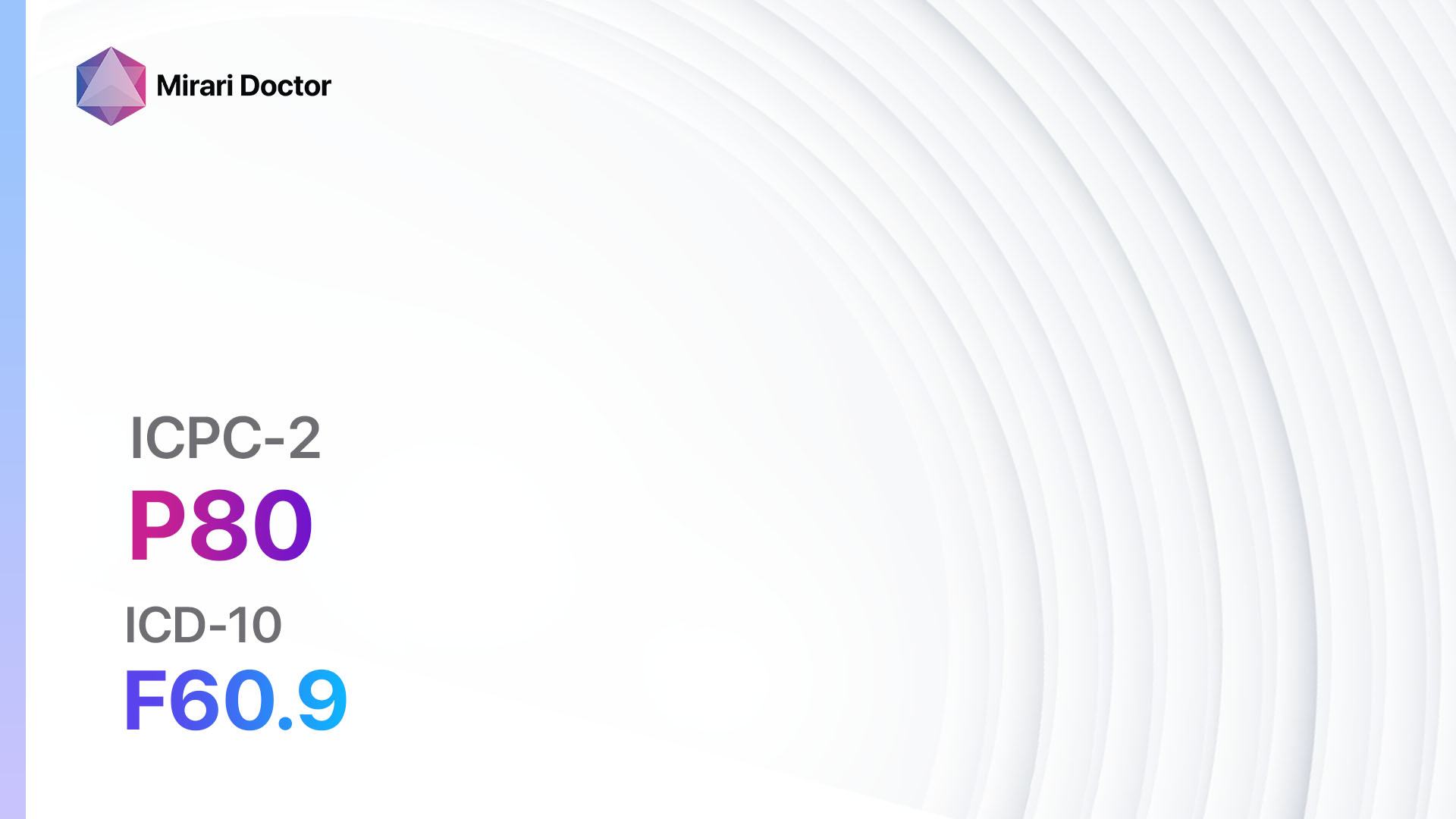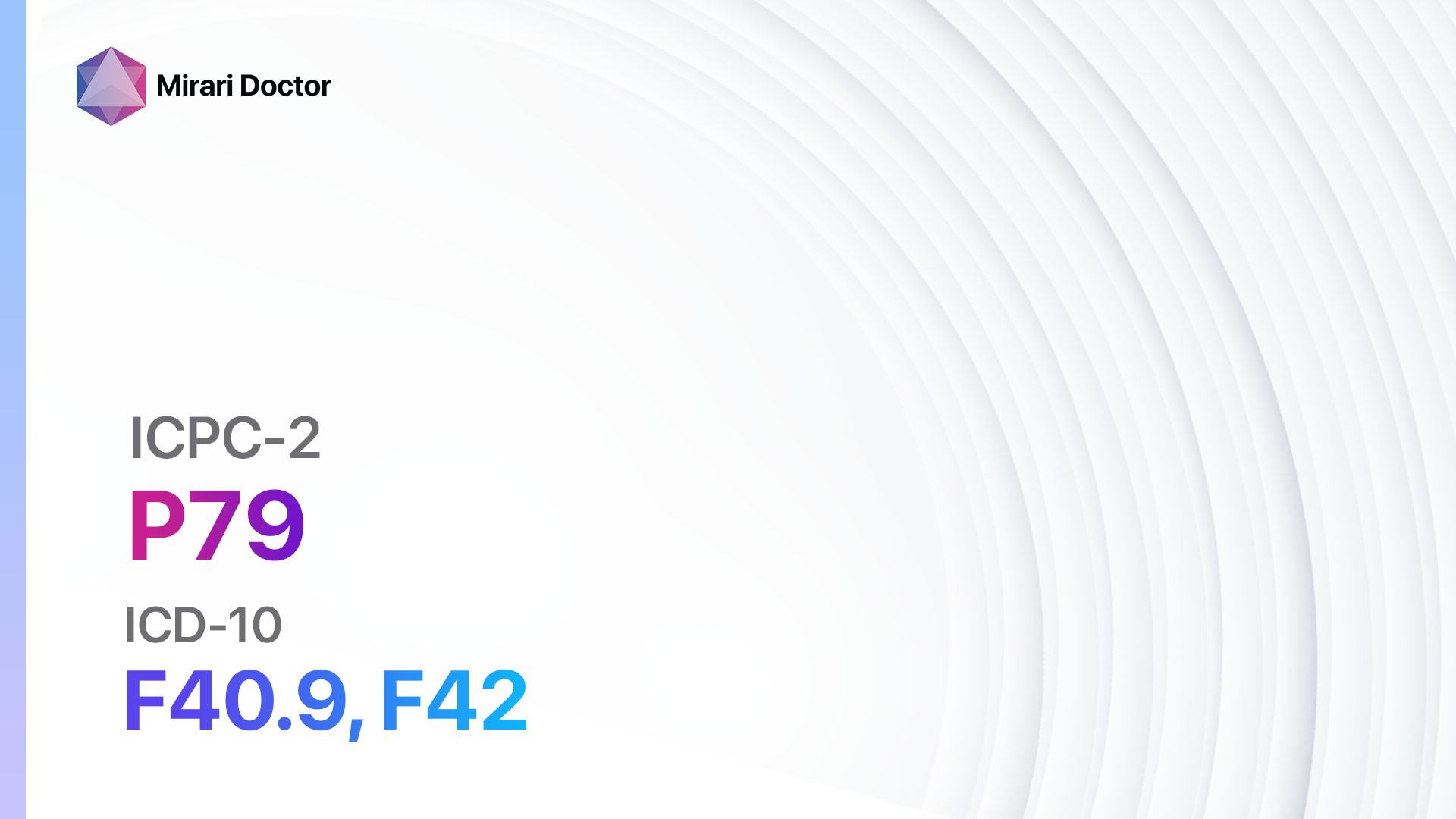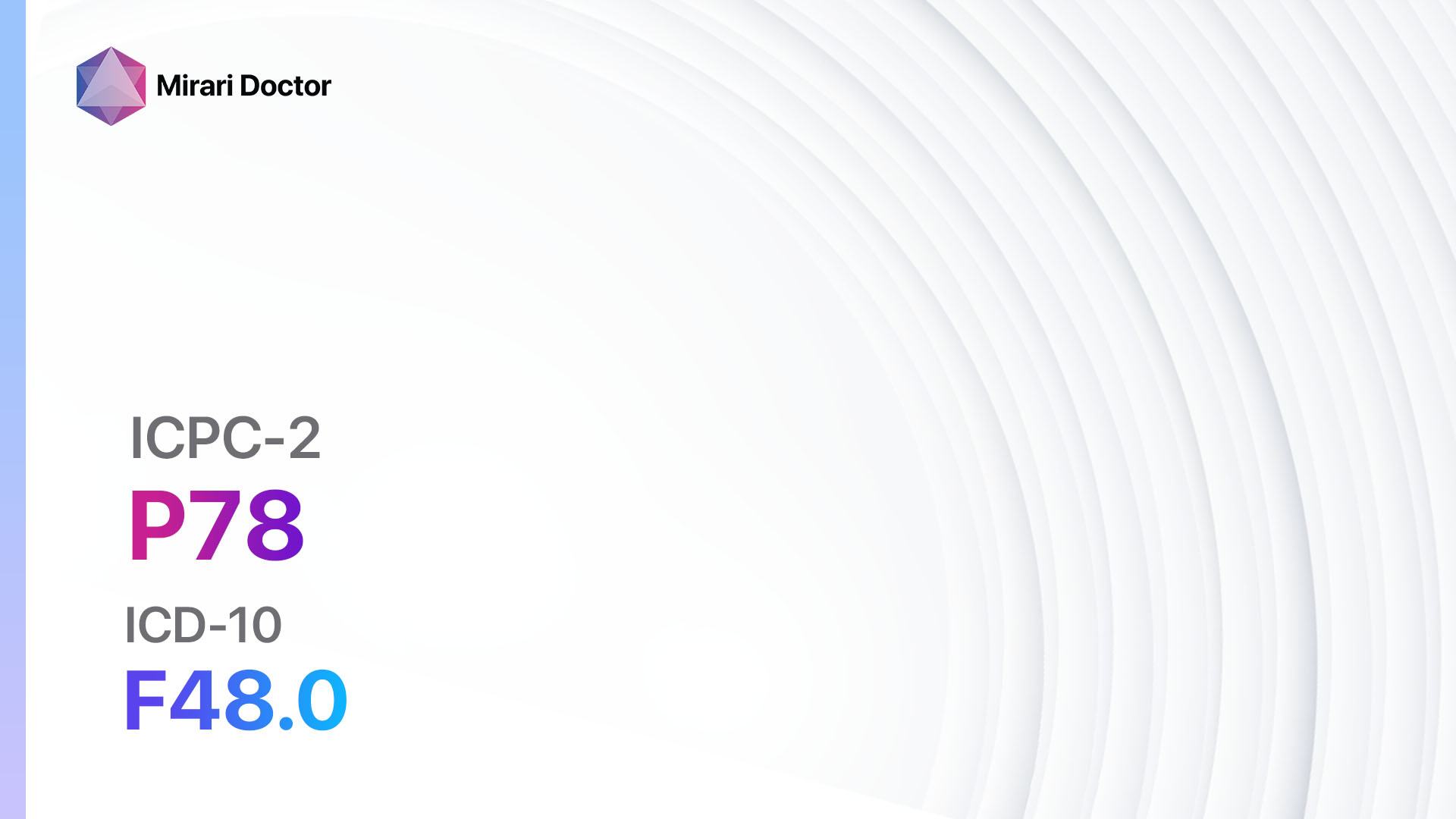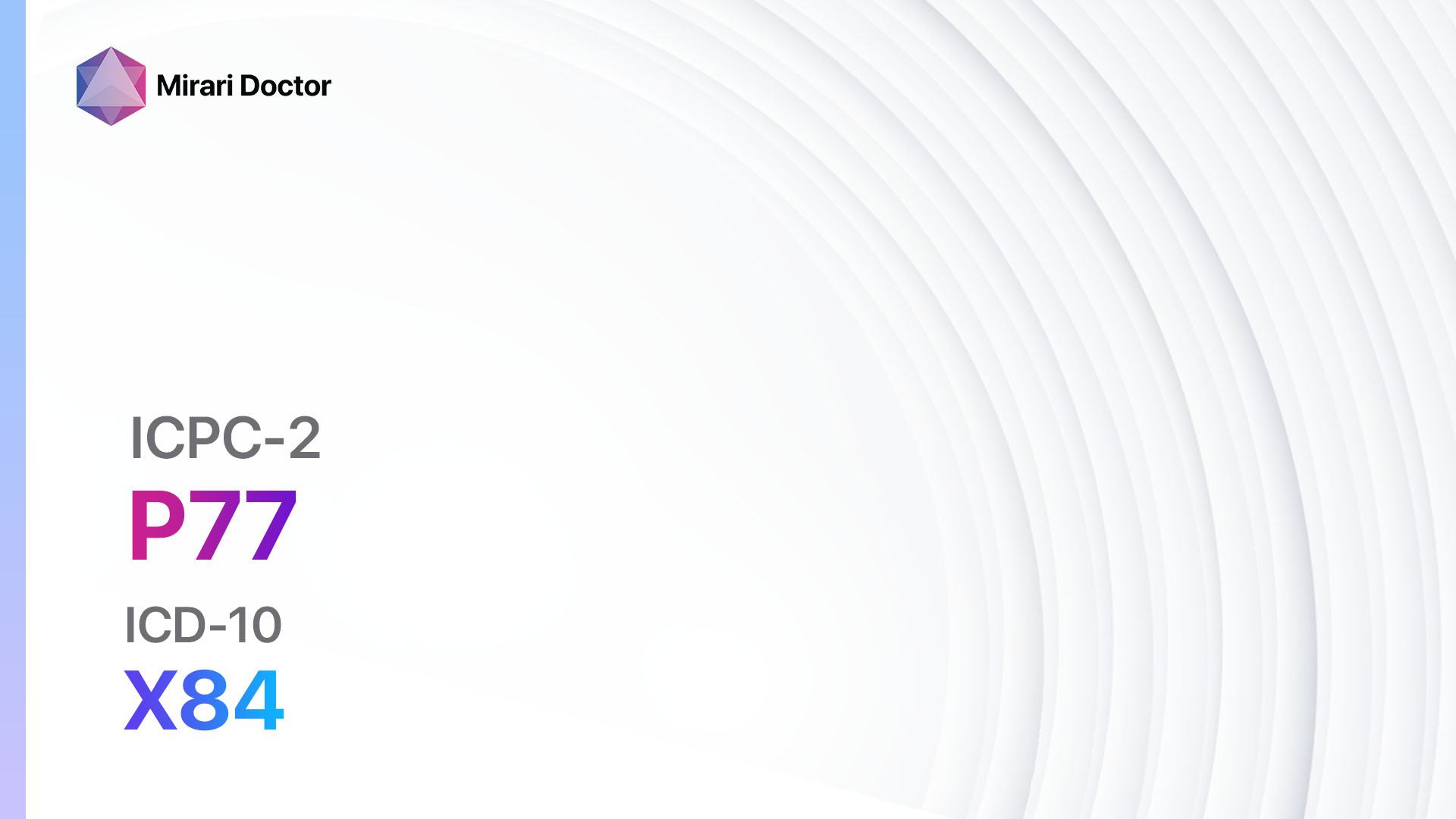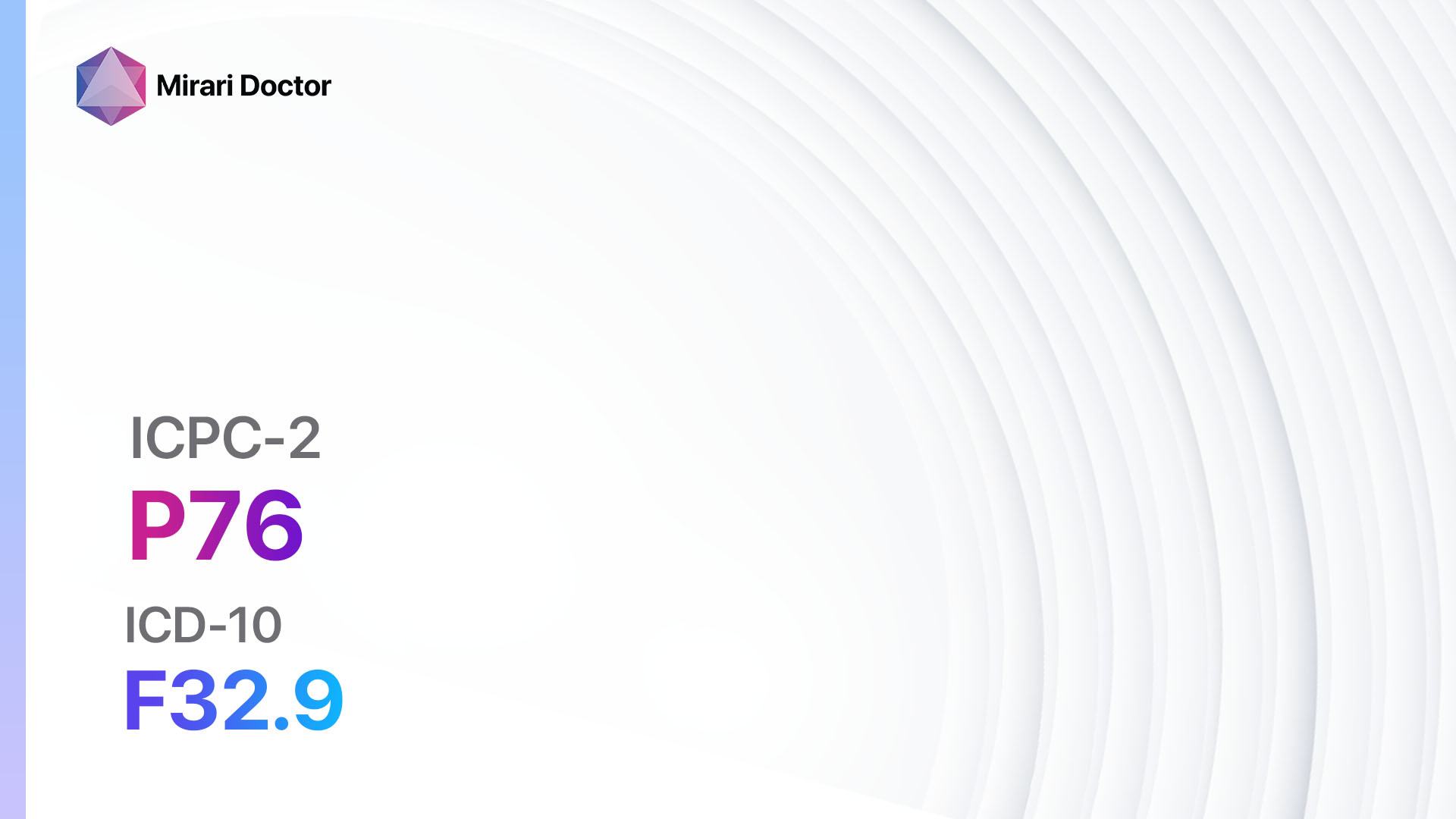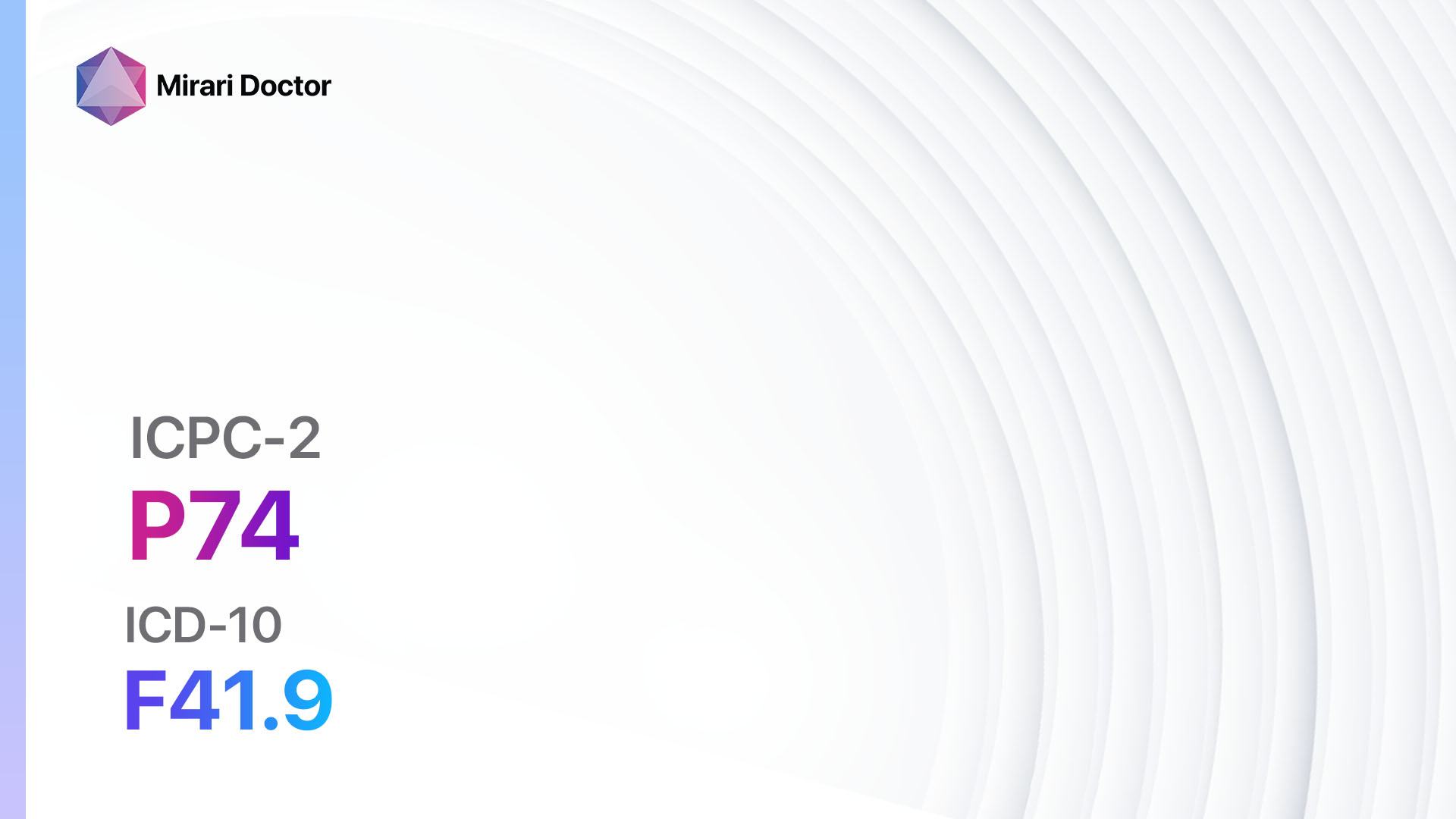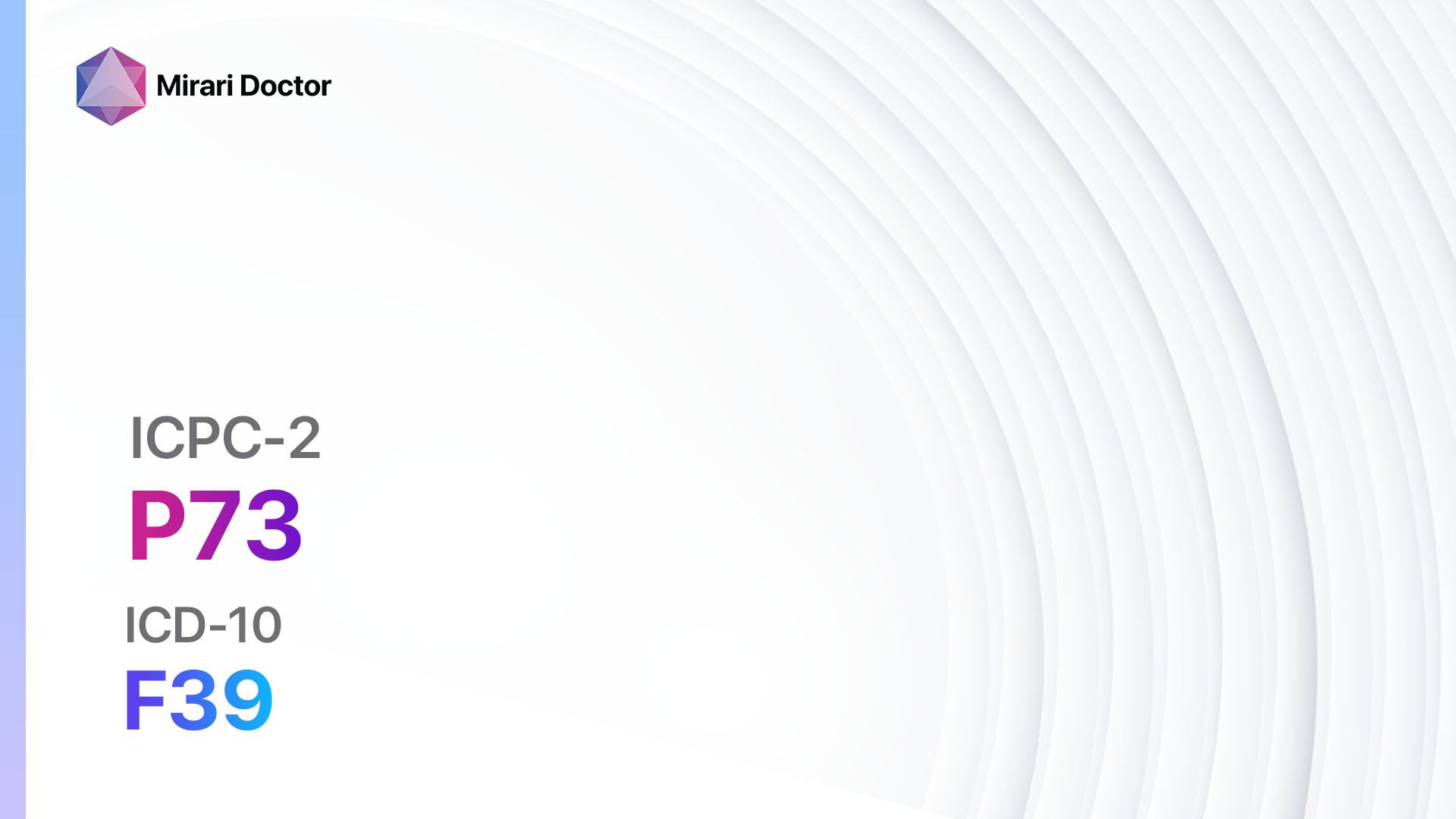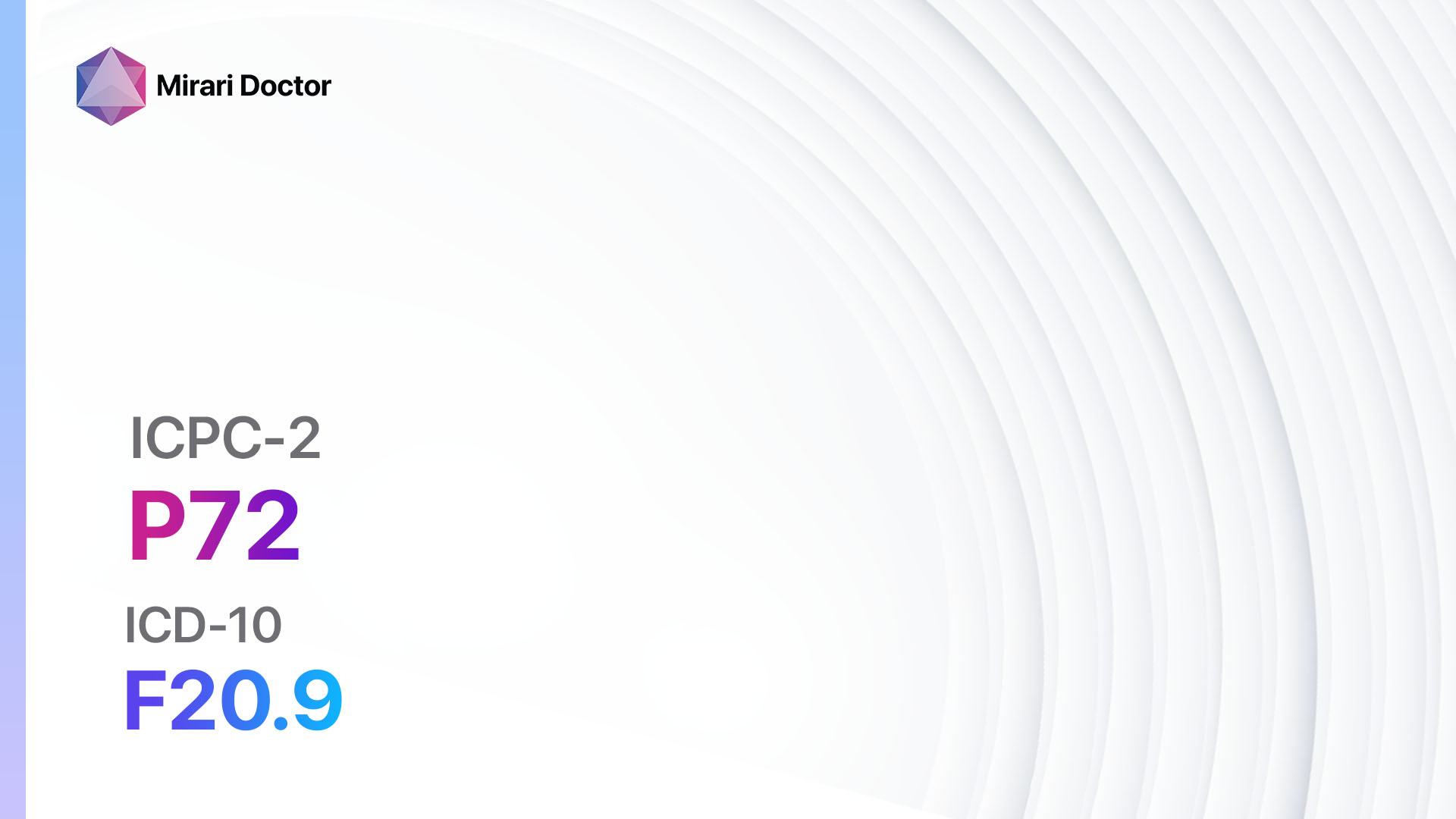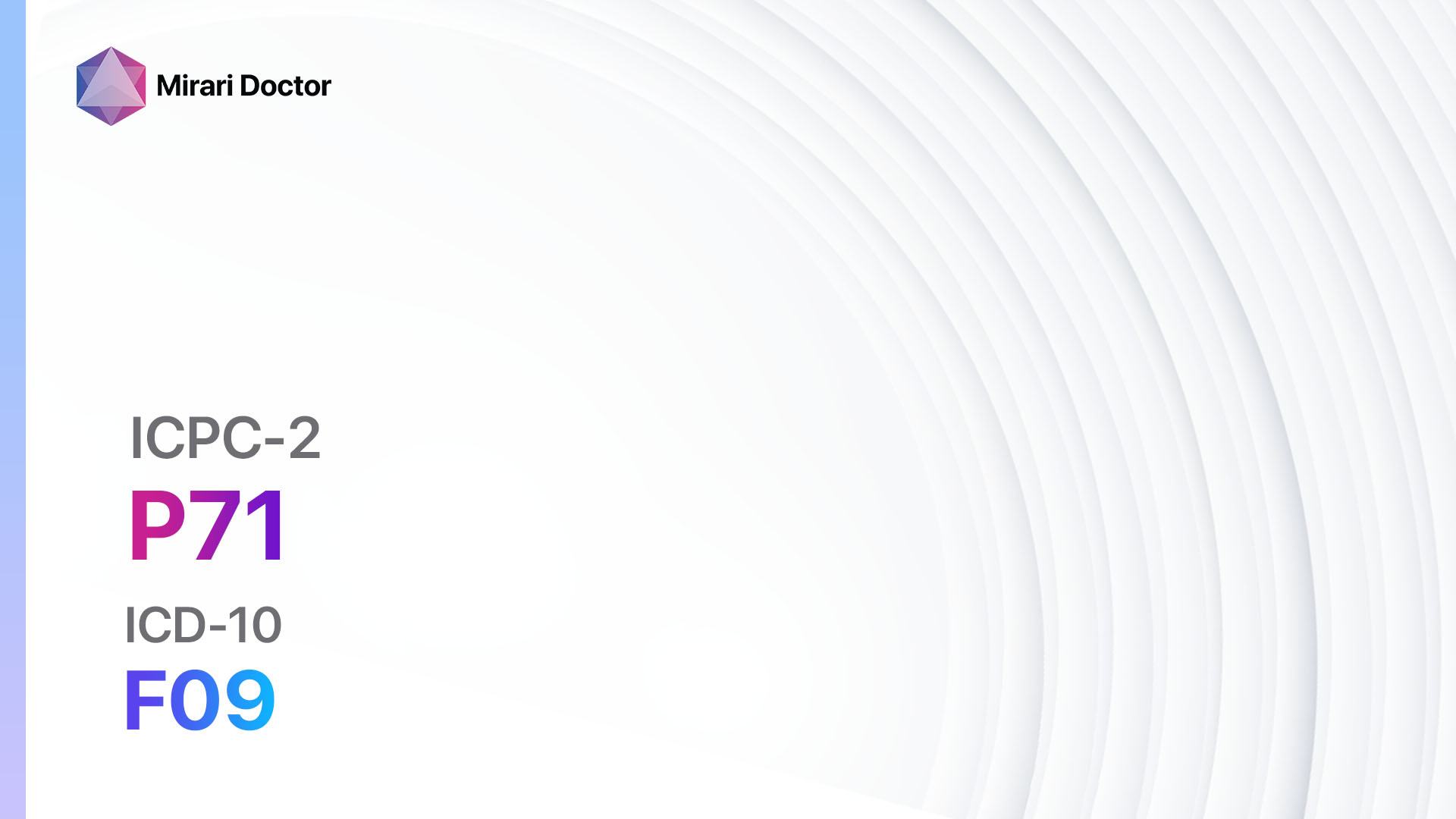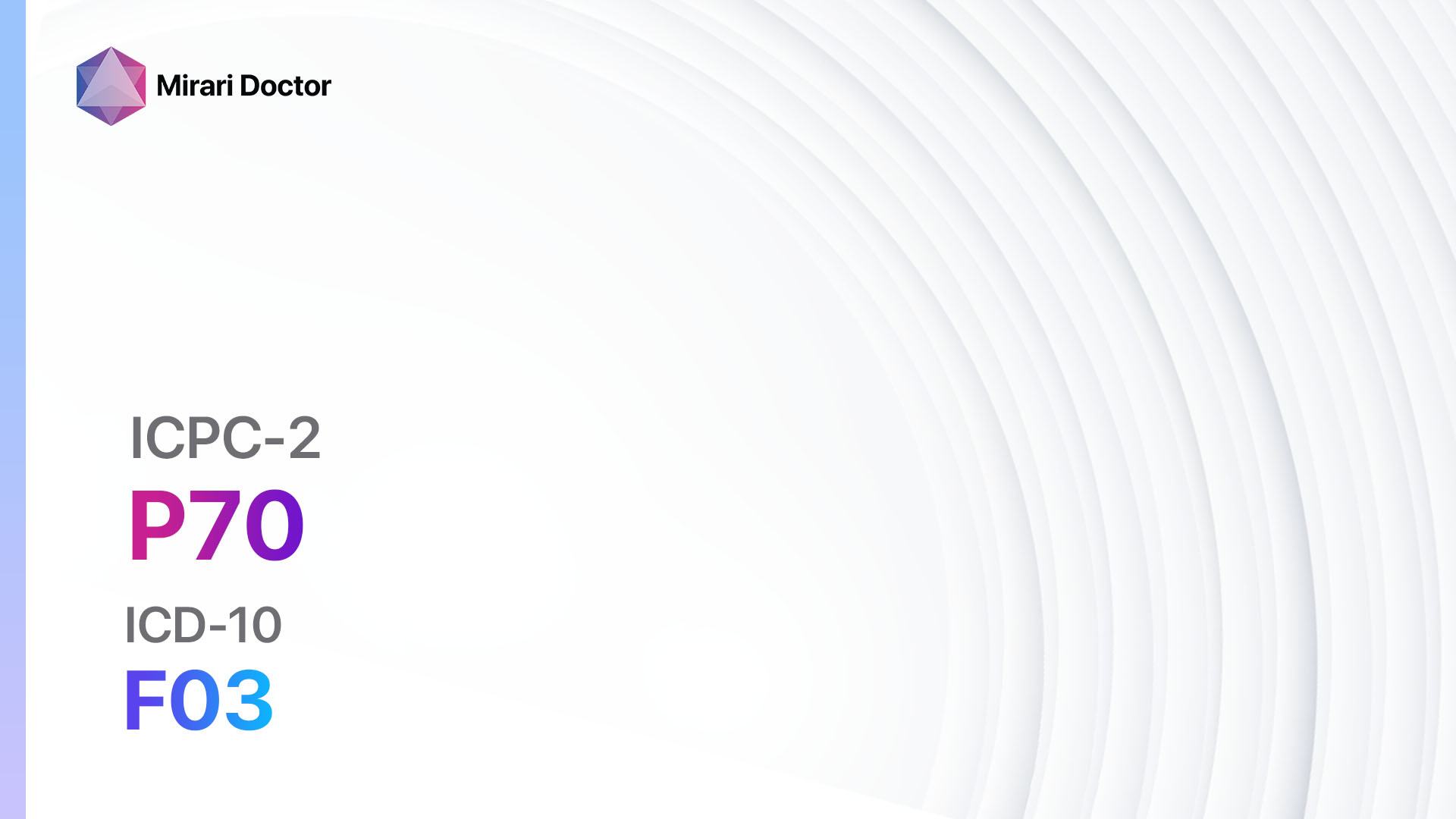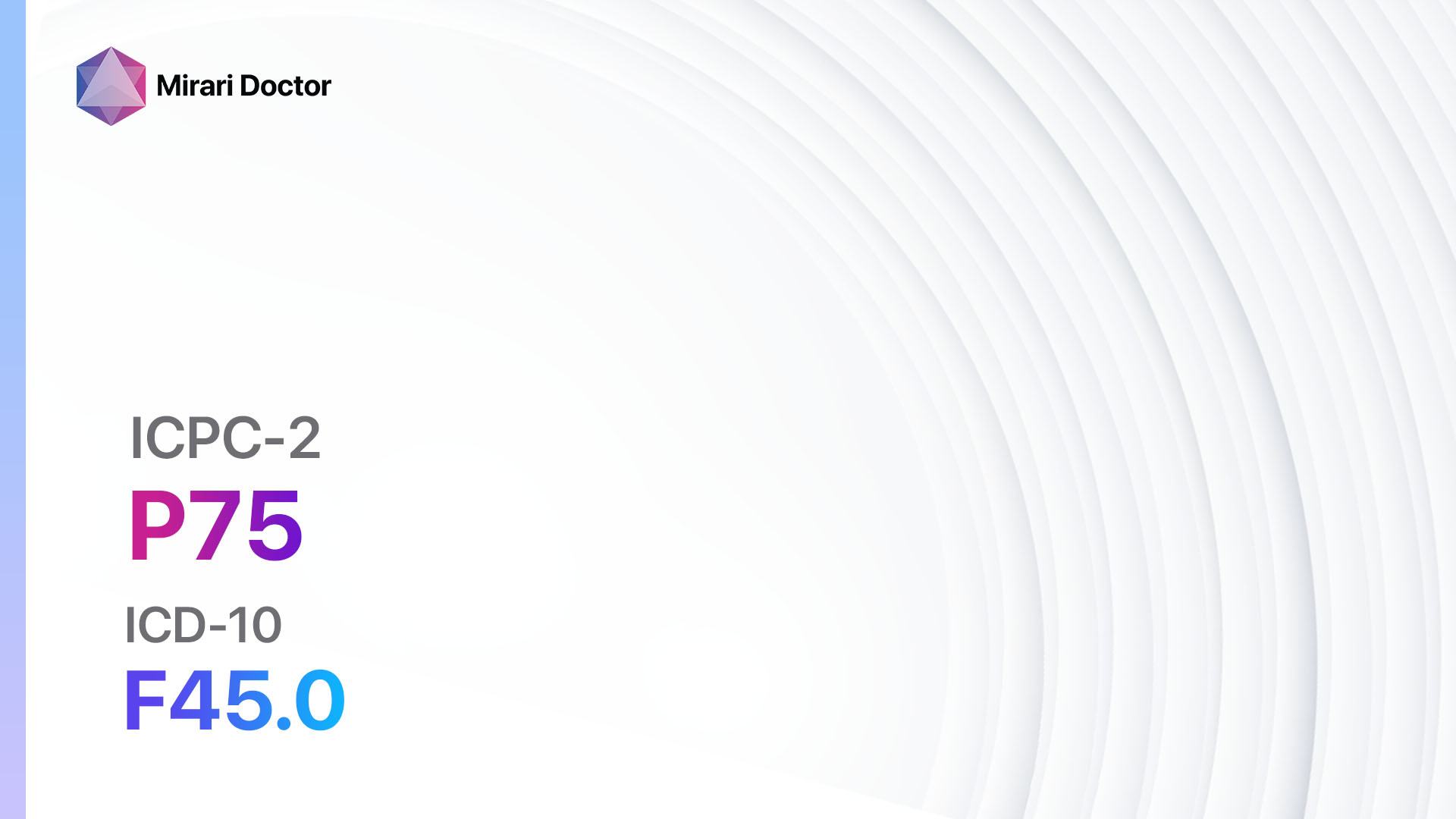
Introduction
Somatization disorder is a complex condition characterized by the presence of multiple physical symptoms that cannot be explained by any underlying medical condition[1]. These symptoms often cause significant distress and impairment in daily functioning[2]. The aim of this guide is to provide a comprehensive overview of somatization disorder, including its symptoms, causes, diagnostic steps, possible interventions, and patient education.
Codes
Symptoms
- Physical symptoms that are persistent and recurrent[3]
- Symptoms that cannot be fully explained by any underlying medical condition[4]
- Symptoms that cause significant distress or impairment in daily functioning[5]
- Symptoms that are not intentionally produced or feigned[6]
Causes
- Genetic factors: Certain genetic variations may increase the risk of developing somatization disorder[7].
- Environmental factors: Childhood trauma, abuse, or neglect may contribute to the development of somatization disorder[8].
- Psychological factors: Individuals with somatization disorder may have underlying psychological issues, such as anxiety or depression, that contribute to the manifestation of physical symptoms[9].
- Sociocultural factors: Cultural beliefs and societal expectations regarding illness and health may influence the development of somatization disorder[10].
Diagnostic Steps
Medical History
- Conduct a comprehensive medical history to gather relevant patient information, including risk factors, medical conditions, and symptoms related to the disease.
- Assess the duration, frequency, and severity of the physical symptoms.
- Evaluate the impact of the symptoms on the patient’s daily life and functioning.
- Inquire about any previous medical evaluations or treatments for the symptoms.
Physical Examination
- Perform a thorough physical examination, focusing on specific signs or findings indicative of somatization disorder.
- Rule out any underlying medical conditions that may explain the physical symptoms.
- Assess for any inconsistencies or discrepancies between the reported symptoms and the physical examination findings.
Laboratory Tests
- There are no specific laboratory tests available to diagnose somatization disorder.
- However, certain blood tests may be performed to rule out any underlying medical conditions that may be contributing to the physical symptoms.
- Additional specialized assays may be ordered based on the clinical presentation and suspected underlying causes.
Diagnostic Imaging
- Diagnostic imaging modalities, such as X-rays, ultrasound, CT scans, or MRIs, are not typically used in the diagnosis of somatization disorder.
- However, imaging studies may be ordered to rule out any structural abnormalities or underlying medical conditions that may be contributing to the physical symptoms.
Other Tests
- Additional diagnostic tests, such as electrocardiogram (ECG), pulmonary function tests, or gastrointestinal studies, may be necessary based on the clinical presentation and suspected underlying causes.
- Psychological assessments, such as the Minnesota Multiphasic Personality Inventory (MMPI), may be used to evaluate the presence of underlying psychological factors contributing to somatization disorder.
Follow-up and Patient Education
- Schedule regular follow-up appointments to monitor the patient’s progress and response to treatment.
- Provide patient education regarding the nature of somatization disorder, including the role of psychological factors in the manifestation of physical symptoms.
- Encourage the patient to engage in psychotherapy or counseling to address any underlying psychological issues contributing to somatization disorder.
- Discuss the importance of a multidisciplinary approach to treatment, involving healthcare professionals from various specialties, such as psychiatry, psychology, and primary care.
Possible Interventions
Traditional Interventions
Medications:
Top 5 drugs for Somatization disorder:
- Selective serotonin reuptake inhibitors (SSRIs) (e.g., Fluoxetine, Sertraline):
- Cost: Generic versions can be $3-$50/month.
- Contraindications: Hypersensitivity to SSRIs, concurrent use of monoamine oxidase inhibitors (MAOIs).
- Side effects: Nausea, headache, insomnia.
- Severe side effects: Serotonin syndrome, suicidal ideation.
- Drug interactions: MAOIs, other serotonergic medications.
- Warning: Increased risk of suicidal thoughts in children and young adults.
- Tricyclic antidepressants (TCAs) (e.g., Amitriptyline, Nortriptyline):
- Cost: Generic versions can be $4-$50/month.
- Contraindications: Recent myocardial infarction, concurrent use of MAOIs.
- Side effects: Dry mouth, constipation, sedation.
- Severe side effects: Cardiac arrhythmias, seizures.
- Drug interactions: MAOIs, anticholinergic medications.
- Warning: Increased risk of suicidal thoughts in children and young adults.
- Benzodiazepines (e.g., Diazepam, Lorazepam):
- Cost: Generic versions can be $4-$50/month.
- Contraindications: Acute narrow-angle glaucoma, respiratory insufficiency.
- Side effects: Sedation, dizziness, confusion.
- Severe side effects: Respiratory depression, dependence.
- Drug interactions: Other CNS depressants, opioids.
- Warning: Risk of tolerance, dependence, and withdrawal symptoms.
- Antipsychotics (e.g., Risperidone, Olanzapine):
- Cost: Generic versions can be $10-$100/month.
- Contraindications: Hypersensitivity to antipsychotics, dementia-related psychosis.
- Side effects: Weight gain, sedation, extrapyramidal symptoms.
- Severe side effects: Neuroleptic malignant syndrome, tardive dyskinesia.
- Drug interactions: Other antipsychotics, medications that prolong QT interval.
- Warning: Increased risk of mortality in elderly patients with dementia-related psychosis.
- Anticonvulsants (e.g., Gabapentin, Pregabalin):
- Cost: Generic versions can be $10-$100/month.
- Contraindications: Hypersensitivity to anticonvulsants, renal impairment.
- Side effects: Dizziness, somnolence, peripheral edema.
- Severe side effects: Stevens-Johnson syndrome, angioedema.
- Drug interactions: Other CNS depressants, opioids.
- Warning: Risk of suicidal thoughts or behavior.
Alternative Drugs:
- Atypical antipsychotics (e.g., Quetiapine, Aripiprazole): May be considered in cases where traditional interventions have been ineffective.
- Mood stabilizers (e.g., Lithium, Valproate): May be used in individuals with comorbid mood disorders.
- Anxiolytics (e.g., Buspirone, Hydroxyzine): May be used to manage anxiety symptoms associated with somatization disorder.
Psychotherapy:
- Cognitive-behavioral therapy (CBT): Helps individuals identify and modify maladaptive thoughts and behaviors associated with somatization disorder.
- Psychodynamic therapy: Focuses on exploring unconscious conflicts and unresolved issues that may contribute to the manifestation of physical symptoms.
- Supportive therapy: Provides emotional support and validation to individuals with somatization disorder.
Other Interventions:
- Physical therapy: May help improve physical functioning and reduce pain associated with somatization disorder.
- Occupational therapy: Assists individuals in developing adaptive strategies to manage daily activities and improve overall functioning.
- Relaxation techniques: Techniques such as deep breathing, progressive muscle relaxation, and guided imagery may help reduce stress and alleviate physical symptoms.
Alternative Interventions
- Acupuncture: May help alleviate pain and improve overall well-being. Cost: $60-$120 per session.
- Massage therapy: May help reduce muscle tension and promote relaxation. Cost: $50-$100 per session.
- Yoga and meditation: Can help reduce stress and improve mind-body connection. Cost: Varies depending on the class or instructor.
- Herbal supplements: Certain herbs, such as St. John’s wort and valerian root, may have potential benefits for managing symptoms of somatization disorder. Cost: Varies depending on the specific supplement.
Lifestyle Interventions
- Regular exercise: Engaging in physical activity can help reduce stress, improve mood, and promote overall well-being. Cost: Varies depending on the chosen activity (e.g., gym membership, fitness classes).
- Healthy diet: Consuming a balanced diet rich in fruits, vegetables, whole grains, and lean proteins can support overall physical and mental health. Cost: Varies depending on individual food choices and dietary preferences.
- Stress management techniques: Practicing stress management techniques, such as deep breathing exercises, mindfulness, and journaling, can help reduce the impact of stress on physical symptoms. Cost: Minimal to no cost.
- Sleep hygiene: Establishing a regular sleep routine and creating a sleep-friendly environment can improve sleep quality and overall well-being. Cost: Minimal to no cost.
It is important to note that the cost ranges provided are approximate and may vary depending on the location and availability of the interventions.
Mirari Cold Plasma Alternative Intervention
Understanding Mirari Cold Plasma
- Safe and Non-Invasive Treatment: Mirari Cold Plasma is a safe and non-invasive treatment option for various skin conditions. It does not require incisions, minimizing the risk of scarring, bleeding, or tissue damage.
- Efficient Extraction of Foreign Bodies: Mirari Cold Plasma facilitates the removal of foreign bodies from the skin by degrading and dissociating organic matter, allowing easier access and extraction.
- Pain Reduction and Comfort: Mirari Cold Plasma has a local analgesic effect, providing pain relief during the treatment, making it more comfortable for the patient.
- Reduced Risk of Infection: Mirari Cold Plasma has antimicrobial properties, effectively killing bacteria and reducing the risk of infection.
- Accelerated Healing and Minimal Scarring: Mirari Cold Plasma stimulates wound healing and tissue regeneration, reducing healing time and minimizing the formation of scars.
Mirari Cold Plasma Prescription
Video instructions for using Mirari Cold Plasma Device – P75 Somatization disorder (ICD-10:F45.0)
| Mild | Moderate | Severe |
| Mode setting: 2 (Wound Healing) Location: 7 (Neuro system & ENT) Morning: 15 minutes, Evening: 15 minutes | Mode setting: 2 (Wound Healing) Location: 7 (Neuro system & ENT) Morning: 30 minutes, Lunch: 30 minutes, Evening: 30 minutes | Mode setting: 2 (Wound Healing) Location: 7 (Neuro system & ENT) Morning: 30 minutes, Lunch: 30 minutes, Evening: 30 minutes |
| Mode setting: 7 (Immunotherapy) Location: 1 (Sacrum) Morning: 15 minutes, Evening: 15 minutes | Mode setting: 7 (Immunotherapy) Location: 1 (Sacrum) Morning: 30 minutes, Lunch: 30 minutes, Evening: 30 minutes | Mode setting: 7 (Immunotherapy) Location: 1 (Sacrum) Morning: 30 minutes, Lunch: 30 minutes, Evening: 30 minutes |
| Total Morning:30minutesapprox.$5USD, Evening:30minutesapprox.$5USD | Total Morning:60minutesapprox.$10USD, Lunch:60minutesapprox. $10 USD, Evening:60minutesapprox. $10 USD, | Total Morning:60minutesapprox.$10USD, Lunch:60minutesapprox. $10 USD, Evening:60minutesapprox. $10 USD, |
| Usualtreatmentfor7-60daysapprox.$70USD–$600USD | Usualtreatmentfor6-8weeksapprox.$1,260USD–$1,680USD | Usualtreatmentfor3-6monthsapprox.$2,700USD–$5,400USD |
 |
|
Use the Mirari Cold Plasma device to treat Somatization disorder effectively.
WARNING: MIRARI COLD PLASMA IS DESIGNED FOR THE HUMAN BODY WITHOUT ANY ARTIFICIAL OR THIRD PARTY PRODUCTS. USE OF OTHER PRODUCTS IN COMBINATION WITH MIRARI COLD PLASMA MAY CAUSE UNPREDICTABLE EFFECTS, HARM OR INJURY. PLEASE CONSULT A MEDICAL PROFESSIONAL BEFORE COMBINING ANY OTHER PRODUCTS WITH USE OF MIRARI.
Step 1: Cleanse the Skin
- Start by cleaning the affected area of the skin with a gentle cleanser or mild soap and water. Gently pat the area dry with a clean towel.
Step 2: Prepare the Mirari Cold Plasma device
- Ensure that the Mirari Cold Plasma device is fully charged or has fresh batteries as per the manufacturer’s instructions. Make sure the device is clean and in good working condition.
- Switch on the Mirari device using the power button or by following the specific instructions provided with the device.
- Some Mirari devices may have adjustable settings for intensity or treatment duration. Follow the manufacturer’s instructions to select the appropriate settings based on your needs and the recommended guidelines.
Step 3: Apply the Device
- Place the Mirari device in direct contact with the affected area of the skin. Gently glide or hold the device over the skin surface, ensuring even coverage of the area experiencing.
- Slowly move the Mirari device in a circular motion or follow a specific pattern as indicated in the user manual. This helps ensure thorough treatment coverage.
Step 4: Monitor and Assess:
- Keep track of your progress and evaluate the effectiveness of the Mirari device in managing your Somatization disorder. If you have any concerns or notice any adverse reactions, consult with your health care professional.
Note
This guide is for informational purposes only and should not replace the advice of a medical professional. Always consult with your healthcare provider or a qualified medical professional for personal advice, diagnosis, or treatment. Do not solely rely on the information presented here for decisions about your health. Use of this information is at your own risk. The authors of this guide, nor any associated entities or platforms, are not responsible for any potential adverse effects or outcomes based on the content.
Mirari Cold Plasma System Disclaimer
- Purpose: The Mirari Cold Plasma System is a Class 2 medical device designed for use by trained healthcare professionals. It is registered for use in Thailand and Vietnam. It is not intended for use outside of these locations.
- Informational Use: The content and information provided with the device are for educational and informational purposes only. They are not a substitute for professional medical advice or care.
- Variable Outcomes: While the device is approved for specific uses, individual outcomes can differ. We do not assert or guarantee specific medical outcomes.
- Consultation: Prior to utilizing the device or making decisions based on its content, it is essential to consult with a Certified Mirari Tele-Therapist and your medical healthcare provider regarding specific protocols.
- Liability: By using this device, users are acknowledging and accepting all potential risks. Neither the manufacturer nor the distributor will be held accountable for any adverse reactions, injuries, or damages stemming from its use.
- Geographical Availability: This device has received approval for designated purposes by the Thai and Vietnam FDA. As of now, outside of Thailand and Vietnam, the Mirari Cold Plasma System is not available for purchase or use.
References
- American Psychiatric Association. (2013). Diagnostic and statistical manual of mental disorders (5th ed.).//doi.org/10.1176/appi.books.9780890425596
- Kroenke, K. (2007). Efficacy of treatment for somatoform disorders: a review of randomized controlled trials. Psychosomatic Medicine, 69(9), 881-888.//doi.org/10.1097/PSY.0b013e31815b00c4
- Lipowski, Z. J. (1988). Somatization: the concept and its clinical application. The American Journal of Psychiatry, 145(11), 1358-1368.//doi.org/10.1176/ajp.145.11.1358
- Barsky, A. J., Orav, E. J., & Bates, D. W. (2005). Somatization increases medical utilization and costs independent of psychiatric and medical comorbidity. Archives of General Psychiatry, 62(8), 903-910.//doi.org/10.1001/archpsyc.62.8.903
- Gureje, O., Simon, G. E., Ustun, T. B., & Goldberg, D. P. (1997). Somatization in cross-cultural perspective: a World Health Organization study in primary care. The American Journal of Psychiatry, 154(7), 989-995.//doi.org/10.1176/ajp.154.7.989
- Rief, W., & Barsky, A. J. (2005). Psychobiological perspectives on somatoform disorders. Psychoneuroendocrinology, 30(10), 996-1002.//doi.org/10.1016/j.psyneuen.2005.03.018
- Lembo, A. J., Zaman, M., Krueger, R. F., Tomenson, B. M., & Creed, F. H. (2009). Psychiatric disorder, irritable bowel syndrome, and extra-intestinal symptoms in a population-based sample of twins. The American Journal of Gastroenterology, 104(3), 686-694.//doi.org/10.1038/ajg.2008.152
- Spitzer, C., Barnow, S., Gau, K., Freyberger, H. J., & Grabe, H. J. (2008). Childhood maltreatment in patients with somatization disorder. The Australian and New Zealand Journal of Psychiatry, 42(4), 335-341.//doi.org/10.1080/00048670701881538
- Henningsen, P., Zimmermann, T., & Sattel, H. (2003). Medically unexplained physical symptoms, anxiety, and depression: a meta-analytic review. Psychosomatic Medicine, 65(4), 528-533.//doi.org/10.1097/01.psy.0000075977.90337.e7
- Kirmayer, L. J., & Young, A. (1998). Culture and somatization: clinical, epidemiological, and ethnographic perspectives. Psychosomatic Medicine, 60(4), 420-430.//doi.org/10.1097/00006842-199807000-00006
Related articles
Made in USA


